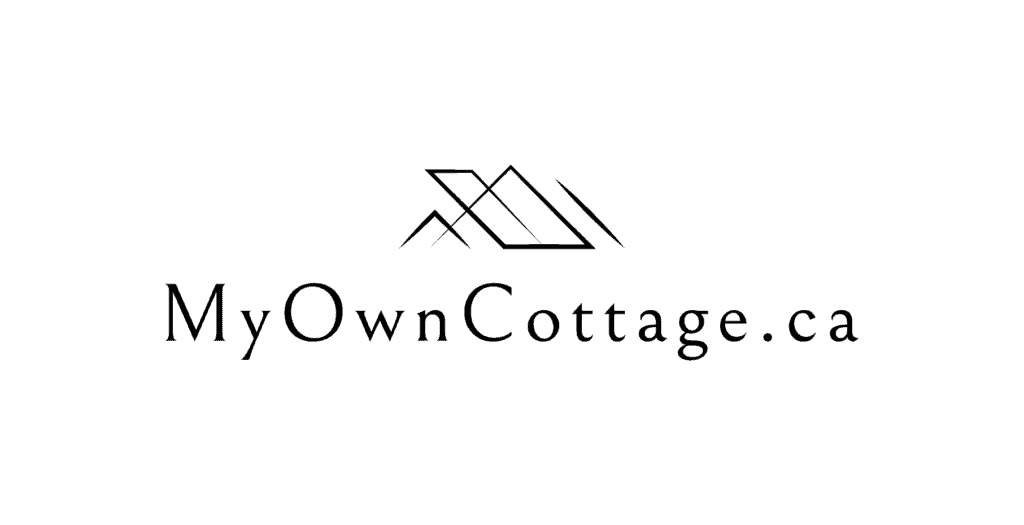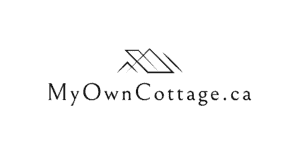Can You Put a Prefab Cottage in a Conservation Area in Ontario?
Can you put a prefab cottage in a Conservation Area in Ontario?
Learn about land use restrictions, zoning overlays, and how to navigate approvals.
Importantly, this includes near wetlands, lakes, or forests.
Can You Put a Prefab Cottage in a Conservation Area in Ontario?
Yes, you can build a prefab cottage in a conservation area in Ontario, but only with approval from the local Conservation Authority.
In fact, this may require environmental impact studies, permits under the Conservation Authorities Act, and compliance with setback and land use restrictions.
Even properties zoned for residential use can be denied if they fall within regulated wetlands, floodplains, or habitat protection zones.
Ontario Conservation Land Prefab Home Building Regulations
Prefab cottages in Ontario offer a unique balance of comfort, efficiency, and sustainability—but building one in a conservation area isn’t as simple as setting your sights on a scenic plot and placing an order.
Understanding the regulatory landscape can make or break your dream home build.
In this article, we delve into the realities of prefab cottage construction in conservation areas throughout Ontario.
Are Prefab Cottages Allowed in Ontario Conservation Areas?
Yes—but only under strict conditions.
Many buyers assume that if a property is zoned “RU” (Rural) or “SR” (Shoreline Residential), it’s automatically buildable.
However, in Ontario, properties near wetlands, rivers, forests, and steep slopes often fall under Conservation Authority (CA) jurisdiction.
These overlapping zoning overlays enforce environmental regulations that go beyond typical municipal building codes.
Common restrictions include:
30-metre or greater setbacks from water features or wetlands
Conservation Authorities Act permits
Environmental Impact Studies (EIS) or hydrogeological assessments
Stormwater management requirements tailored to natural drainage and slope
These rules are enforced not by municipalities alone, but by one of Ontario’s 36 Conservation Authorities—each with their own guidelines and discretionary approval powers.
Zoning Overlays and Environmental Restrictions
Zoning maps can be misleading if you’re only looking at municipal classifications.
Many properties in rural Ontario are “double-zoned”—meaning a lot may be approved for residential use but still fall under environmental protection overlays that severely limit development options.
🛠️ What You’ll Need:
Municipal zoning bylaw documents
CA regulation maps (e.g., Otonabee, Kawartha, Nottawasaga)
Aerial topography overlays for slope and watershed proximity
Site feasibility consultation from a licensed planning consultant
Understanding these layers early prevents wasted investment in unbuildable land.
If you’re considering a custom home, modular home, or tiny home in one of these areas, having a land-use professional pre-screen your site is a huge advantage.
📍 Learn more: Ontario Prefab Cottage Zoning Laws Explained: Your Expert Guide.
This in-depth guide explains how Ontario zoning classifications like RU (Rural) and SR (Shoreline Residential) interact with conservation regulations, with real examples and expert-reviewed insights to help you avoid costly mistakes.
What Conservation Authorities Can Approve—or Deny
Conservation Authorities act under provincial legislation but interpret and apply it regionally.
Bear in mind, what passes in one watershed could be denied in another.
Here’s what they typically control:
Development near floodplains
Alteration of watercourses or wetlands
Tree removal or site grading
Building envelope size and orientation
You’ll need to submit a formal application with site plans, hydrologic studies, and potentially a geotechnical report.
Expect application fees and turnaround times of 4–12 weeks, depending on the CA’s review capacity.
Real Case: Denied Build in the Kawartha Conservation Zone
One of our clients, Emily from Toronto, purchased a 2-acre parcel in Peterborough County.
It was zoned seasonal residential and had road access, a shallow well, and hydro at the lot line.
She planned a 1,200 sq/ft custom design prefab home on frost-protected slab.
But the plot was within 100 metres of a regulated wetland.
When the Otonabee Region Conservation Authority reviewed her application, they issued a full denial—citing encroachment on habitat corridors and wetland buffer zones.
Despite excellent customer service from her builder, Emily was left with a $14,000 land deposit loss.
This happened despite the fact that the land was technically zoned for cottages—but environmentally was off-limits.
🧭 Key Lesson: Always screen for conservation overlays and wetland buffers—zoning alone is not enough.
How to Pre-Screen Land for Buildability in Protected Areas
Before you fall in love with a property, verify its buildability:
Step-By-Step Walkthrough:
Get municipal and CA zoning maps – These show both your property’s base zoning and any regulated overlays.
Call the local Conservation Authority – Ask if the property lies within a regulated area and what studies might be required.
Hire a planning consultant or land-use specialist – They can overlay GIS data and flag risks (slope, flooding, soil type).
Request a pre-consultation with CA staff – Many offer free 15-minute assessments or paid site walks.
Assess your build style – Lightweight pier foundations or elevated prefab floor plans may be more CA-friendly.
✅ Pro Tip: Prefab homes built in a controlled environment offer energy efficiency, weather-resilient construction, and faster construction timelines—which can be valuable in narrow seasonal windows often dictated by CAs.
📍 Get key local information for free from My Own Cottage: Book a free site feasibility consultation here.
Explore Conservation Area Buildability
To simplify your land buying and building process, we’ve created a Conservation Area Buildability Checklist that walks you through everything.
Importantly, this includes GIS mapping tools to choosing the right floor plan for low-impact construction.
🧾 What’s included:
CA contact list by region
Red flag indicators
Site inspection tips
Permitting documents required
📍 Start the right way: Explore conservation-friendly prefab floor plans here.
Is a Prefab the Right Fit for Protected Areas?
If done right, a prefab cottage can be the perfect solution for building within conservation guidelines.
With high-performance windows, adaptable floor plans, and excellent support from CA-experienced cottage builders, you can often meet environmental requirements.
All without sacrificing comfort or style.
Professionals Who Know Ontario’s Building Codes
Still, it’s crucial to align with professionals who know Ontario’s building codes and CA policies.
At My Own Cottage, we’ve helped dozens of clients balance dream-home vision with real-world limitations.
“The best part was knowing I wasn’t going to be blindsided mid-project. The entire process was smooth and transparent, and I ended up with a high quality product that exceeded expectations.” – Michael C., Bancroft, ON
To get started on your sensitive build project, simply book a free consultation or call us directly today.
🧑💼 Request a Free Consultation
📲 Call Us Directly: (705) 345-9337
✅ Ontario-Built | ⚡ Energy-Efficient | 🏡 Fully Customizable | 🚚 Fast Delivery
📍 Discover the best compliant prefab designs in Ontario: With Prefab Cottages Ontario here.
Alternatively, for your convenience, you can also simply fill out the contact form below and we’ll get back to you soon! 👇
❓ FAQ: Building a Prefab Cottage in a Conservation Area in Ontario
Can you build a prefab cottage in a conservation area in Ontario?
Yes, but you need approval from the local Conservation Authority, and must comply with zoning bylaws, the Ontario Building Code, and environmental regulations.
Are prefab homes legal in Ontario?
Yes, prefab homes are legal in Ontario if they meet local zoning bylaws and the Ontario Building Code, including CSA A277 certification for factory-built homes.
How much does it cost to build a prefab cottage in Ontario?
A prefab cottage in Ontario typically costs $180–$280 per square foot, not including land, permits, or site preparation.
Can you build an off-grid cabin in Ontario?
Yes, off-grid cabins are allowed in Ontario if they meet zoning rules and the Ontario Building Code; conservation lands may require additional permits and assessments.
Can you put a tiny home in your backyard in Ontario?
Yes, many Ontario municipalities allow tiny homes in backyards as garden suites or ADUs, subject to zoning, servicing, and Building Code requirements.
Which municipalities in Ontario allow tiny homes?
Cities like Toronto, Ottawa, Kawartha Lakes, Thunder Bay, and Hamilton allow tiny homes under updated zoning bylaws for additional dwelling units.
What is a modular home in Ontario?
A modular home is a factory-built residence constructed to CSA A277 standards and permanently installed on-site, meeting all Ontario Building Code requirements.
Who are the top modular home builders in Ontario?
Leading modular home builders in Ontario include My Own Cottage, Quality Homes, Royal Homes, and Guildcrest Homes, known for energy efficiency and custom design.
What are modular home prices in Ontario?
Modular home prices in Ontario average $150–$300 per square foot, depending on design, finishes, and location-related factors like site prep or conservation permits.
Are used modular homes available in Ontario?
Yes, used modular homes are sold through online marketplaces and dealers, but moving them to a new lot may require zoning and foundation compliance reviews.
What are the most affordable prefab homes in Ontario?
The most affordable prefab homes in Ontario are tiny homes and micro cabins, starting around $100,000, offering major cost savings with smaller footprints and simplified construction.
Are prefab tiny homes allowed in Ontario?
Yes, prefab tiny homes are allowed if they comply with the Ontario Building Code, meet minimum size rules, and conform to local zoning and servicing requirements.
Are there any grants for tiny homes in Ontario?
Some Ontario municipalities offer tiny home grants through affordable housing programs, often tied to income eligibility or use as permanent primary residences.

